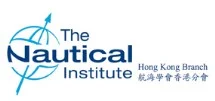decarbonisation
archive > archive presentations
The path to decarbonisation
Members of the Hong Kong branch were treated to an excellent presentation in March. Entitled ‘Decarbonisation: Available Options and Carbon Capture’ it was delivered by Hare Ram Sah, General Manager of Venture Marine Services Ltd., a Wah Kwong Group Company.
Hare Ram began by showing some short videos which explained the latest thinking about global warming and why it matters. He stated that decarbonisation is unavoidable and we will all have to comply with GHG emission reduction regulations in order to save the planet and protect future generations. The IMO is calling for at least 20 % (striving for 30%) reductions by 2030 and net zero emissions by 2050, but how do we achieve this?
Scrapping older vessels would be an obvious starting point, but is simply not practical, so owners need to consider upgrades to reduce emissions. Modern low friction hull coatings, voyage and port call optimisation, improved propulsion efficiency, ESD, shaft generators, rotor sails and air lubrication were all discussed, along with their manufacturers’ claims of their effect on emissions. Hare Ram told us that Wah Kwong’s experience indicates that manufacturers tend to declare the ideal case scenario, which is normally higher than actual results in service. It is also not advisable to fit all the options to a single vessel, so owners will have to choose four, five or few more of the most effective and suitable for each vessel. In his experience, this is likely to reduce emissions by 20 to 30% (taking voyage optimization in consideration) and will be commercially viable since fitting this could be cheaper than paying carbon taxes.
Alternative fuels are receiving a lot of attention, but the only permanent solution will be zero-emission fuels. At the moment, 99% of vessels are still burning conventional fuel, because alternatives are expensive, not yet widely available, and most of them require more storage space than traditional fuels. As to which of the new fuels is preferable, Hare Ram predicts a multi-fuel approach in the foreseeable future.
The final potential interim measure is carbon capture, which can be undertaken either pre-combustion or post-combustion. Post-combustion capture requires a scrubber (which many ships already have), plus CO2 absorption tower, a liquefaction unit and CO2 storage tanks. The technology already exists, but it will not be possible to capture all carbon emissions because CO2 takes up much more space than the fuel from which it is derived. It might be a realistic target for most ships to capture about 20% -30 %, which might be enough to keep older ships in service until sufficient green fuel is available. It must also be recognised that, at the moment, there are not enough reception facilities for captured carbon.
It seems most owners will keep their existing ships going as best they can until the way ahead is clearer, but this probably means there will be a shipbuilding boom at some point in the future when these ships are replaced, and it remains to be seen whether shipyard capacity will be sufficient. In the meantime, carbon capture is a viable option for reducing the industry’s emissions.
The talk was followed by a lengthy question and answer session, including a discussion about whether the Pearl River Delta area should offer captured carbon reception facilities, including eventual disposal in disused oil wells in northern China. Our speaker reminded us that CO2 can be used to produce methanol, calcium carbonate, bricks and some other useful items, so it may be that not all of it needs to be injected into disused oil wells.

